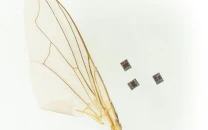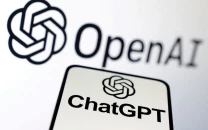GM's Cruise Automation aims to open self-driving tests to public
Cruise Anywhere internal ride service uses GM software and currently is limited to San Francisco employees

General Motors' Cruise Anywhere internal ride service uses GM software and currently is limited to San Francisco employees. PHOTO COURTESY: CRUISE
Cruise’s plan for public tests of its cars is at an early stage. Spokesperson Milin Mehta declined to discuss a timeline and said regulatory approval would be needed. Cruise declined to comment further on future business plans.
BMW looking to replace car keys with mobile phone apps
The Cruise Anywhere internal ride service uses GM software and currently is limited to San Francisco employees.
Alphabet Inc’s self-driving car unit Waymo in May announced plans to test with ride services company Lyft, and Alphabet is now considering an investment in Lyft.
GM already has a stake in Lyft and has been planning to test its autonomous cars in the Lyft network. Mehta declined to comment on Lyft.
GM unit says it has 'mass producible' autonomous cars
Testing a ride service underscores GM’s ambitions to adapt its business in the face of a potential shift in the car industry from individual ownership to transportation as a service.
Cruise’s expanded ride-hailing test to people outside the company would still have human drivers behind the steering wheel to take over as needed, a staple of real-world tests. Expanding the service also requires adding to Cruise’s fleet of autonomous Chevrolet Bolts.
Only a few companies are giving self-driving car rides to the public, including Alphabet, Uber Technologies and startup nuTonomy.
Urban environments in climates with variable weather present the most difficulty for self-driving cars, which must learn how to navigate traffic jams and “see” in snow and rain. Developers also are testing passengers’ response to a car without a person behind the wheel.
Testing a self-driving ride service means that GM is exploring most parts of transportation as a service, including producing cars and self-driving technology, offering car sharing through its Maven service and now trying ride-sharing.
Maven already has begun to use its own Gig leasing business to serve drivers for Lyft, Uber and delivery services. Through Gig, Maven can provide GM vehicles directly to drivers who previously leased from Maven through Lyft Express Drive and Uber Vehicle Solutions.
Asked last month if GM through Maven aims to create its own ride and delivery service, Maven boss Julia Steyn said, “We are building this out step by step.”



















COMMENTS
Comments are moderated and generally will be posted if they are on-topic and not abusive.
For more information, please see our Comments FAQ